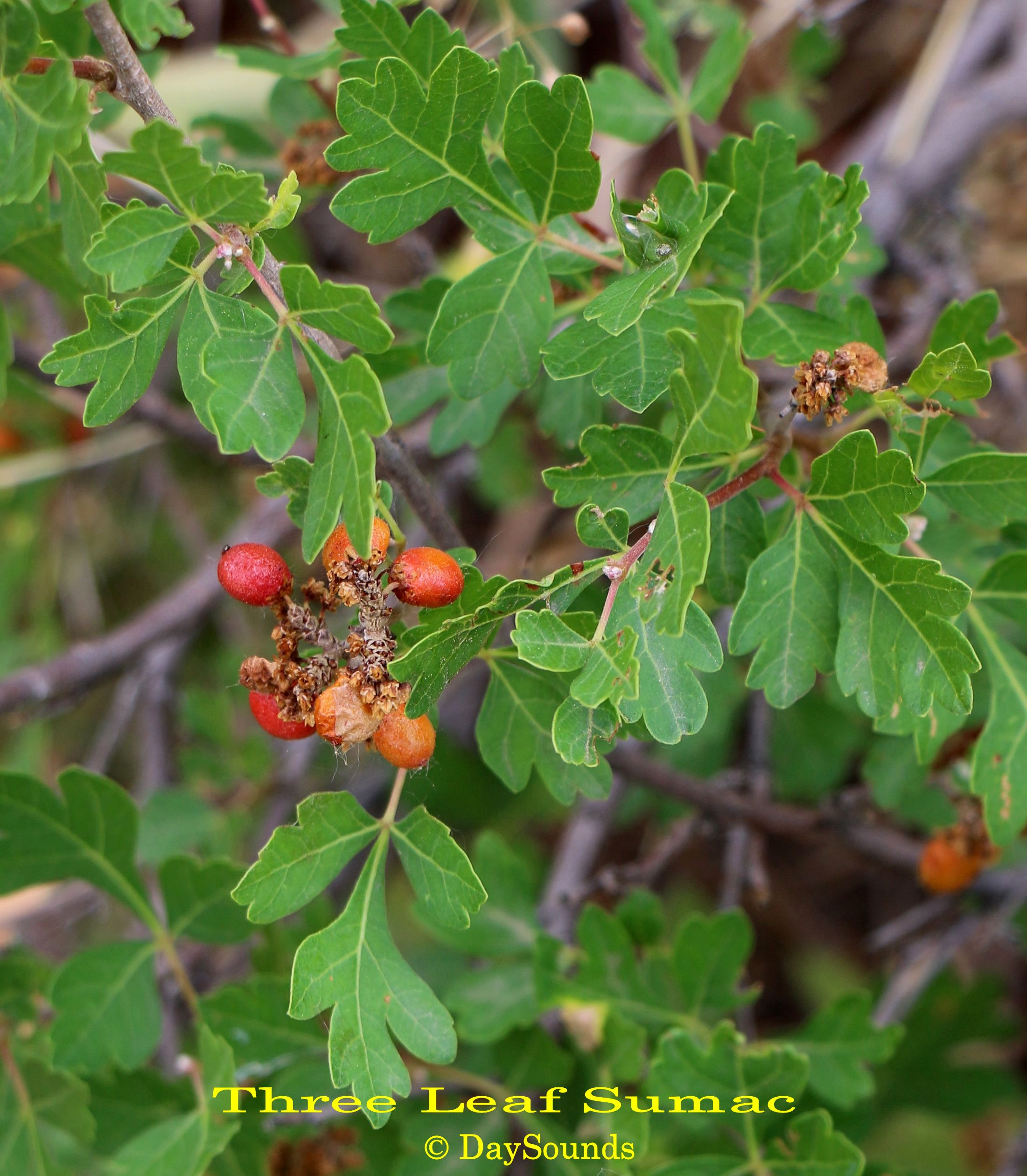by DaySounds © 2013-15

Three Leaf Sumac (Rhus trilobata)
genus of poison sumac is Toxicodendron (the species, vernix). Three-leaf sumac
has red/pinkish berries when mature, but pale yellowish in the early stages. It
may have green or red petioles (leaf stems). Poison sumac, on the other hand,
has white berries when mature, but green in the early stages, and red/pinkish
leaf stems. A little confusing; however, the features which differentiate both
the most is that poison sumac leaves are pinnately compound, while R.t.'s are
pamately trifoliate; also, R.t. berries grow close together, while poison sumac's
grow farther apart.
As with stag's horn, the berries of three leaf sumac are used as a spice for cooking,
to make lemonade, and also they can be roasted and eaten like peanuts. Peeled
young (green inside) shoots are edible as well (either raw or cooked). Rhus sumacs
are antioxidants, good sources of vitamin C, calcium, potassium, and magnesium;
they are astringent, and blood purifiers.
Toxicodendron sumacs have urushiol oil throughout the plant. This oil (also
contained in poison oak and poison ivy) produces allergic reactions and rashes
which can last for several days, and in some cases weeks. A good remedy to
minimize those effects is to wash the affected area right away with water
and/or alcohol. Any clothes or pets that have been in contact with the plant
might have urushiol oil on them--wash them with gloves.
©DaySounds
PO Box 746497
Arvada, CO 80517
USA